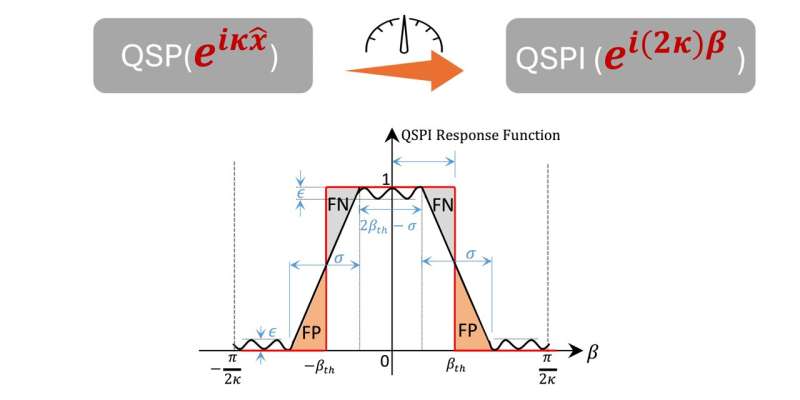This article has been reviewed according to Science X's editorial process and policies. Editors have highlighted the following attributes while ensuring the content's credibility:
fact-checked
trusted source
proofread
Researchers develop general framework for designing quantum sensors

Researchers from North Carolina State University and the Massachusetts Institute of Technology have designed a protocol for harnessing the power of quantum sensors. The protocol could give sensor designers the ability to fine-tune quantum systems to sense signals of interest, creating sensors that are vastly more sensitive than traditional sensors.
A paper describing the work is published in the journal Quantum.
"Quantum sensing shows promise for more powerful sensing capability that can approach the fundamental limit set by the law of quantum mechanics, but the challenge lies in being able to direct these sensors to find the signals we want," says Yuan Liu, assistant professor of electrical and computer engineering and computer science at NC State and corresponding author of the research. Liu was formerly a postdoctoral researcher at MIT.
"Our idea was inspired by classical signal processing filter design principles that are routinely used by electrical engineers," Liu says. "We generalized these filter designs to quantum sensing systems, which allows us to 'fine-tune' what is essentially an infinite dimensional quantum system by coupling it to a simple two-level quantum system."
Specifically, the researchers designed an algorithmic framework that couples a qubit with a bosonic oscillator. Qubits, or quantum bits, are quantum computing's counterpart to classical computing's bits—they store quantum information and can only be in a superposition of two basis states: ├ |0⟩, ├ |1⟩. Bosonic oscillators are the quantum analog of classical oscillators (think of a pendulum's motion), and they share features similar to classical oscillators, but their states are not limited to a linear combination of only two basis states—they are infinite-dimensional systems.
"Manipulating the quantum state of an infinite-dimensional sensor is complicated, so we begin by simplifying the question," Liu says. "Instead of trying to figure out amounts of our targets, we just ask a decision question: whether the target has property X. Then we can design the manipulation of the oscillator to reflect that question."
By coupling the infinite dimensional sensor to the two-dimensional qubit and manipulating that coupling, the sensor could be tuned to a signal of interest. Interferometry is used to encode the results into the qubit state which is then measured for readout.
"This coupling gives us a handle on the bosonic oscillator, so we could use a polynomial function—math that describes wave forms—to engineer the oscillator's wave function to take a particular shape, thus attuning the sensor to the target of interest," Liu says.
"Once the signal happens, we undo the shaping, which creates interference in the infinite dimensional system that comes back as a readable result—a polynomial function determined by the original polynomial transformation of the oscillator and the underlying signal—in the qubit's two-level system. In other words, we end up with a 'yes' or 'no' answer to the question of whether the thing we're looking for is there. And the best part is that we only need to measure the qubit once to extract an answer—it's a 'single-shot' measurement."
The researchers see the work as providing a general framework for designing quantum sensing protocols for a variety of quantum sensors.
"Our work is useful because it utilizes readily available quantum resources in leading quantum hardware (including trapped ions, superconducting platform, and neutral atoms) in a fairly simple way," Liu says. "This approach serves as an alarm or indicator that a signal is there, without requiring costly repeated measurements. It's a powerful way to extract useful information efficiently from an infinite dimensional system."
Jasmine Sinanan-Singh and Gabriel Mintzer, both graduate students at MIT, are co-first authors of the research. Isaac L. Chuang, professor of physics and electrical engineering and computer science at MIT, also contributed to the work.
More information: Jasmine Sinanan-Singh et al, Single-shot Quantum Signal Processing Interferometry, Quantum (2024). DOI: 10.22331/q-2024-07-30-1427
Provided by North Carolina State University





















